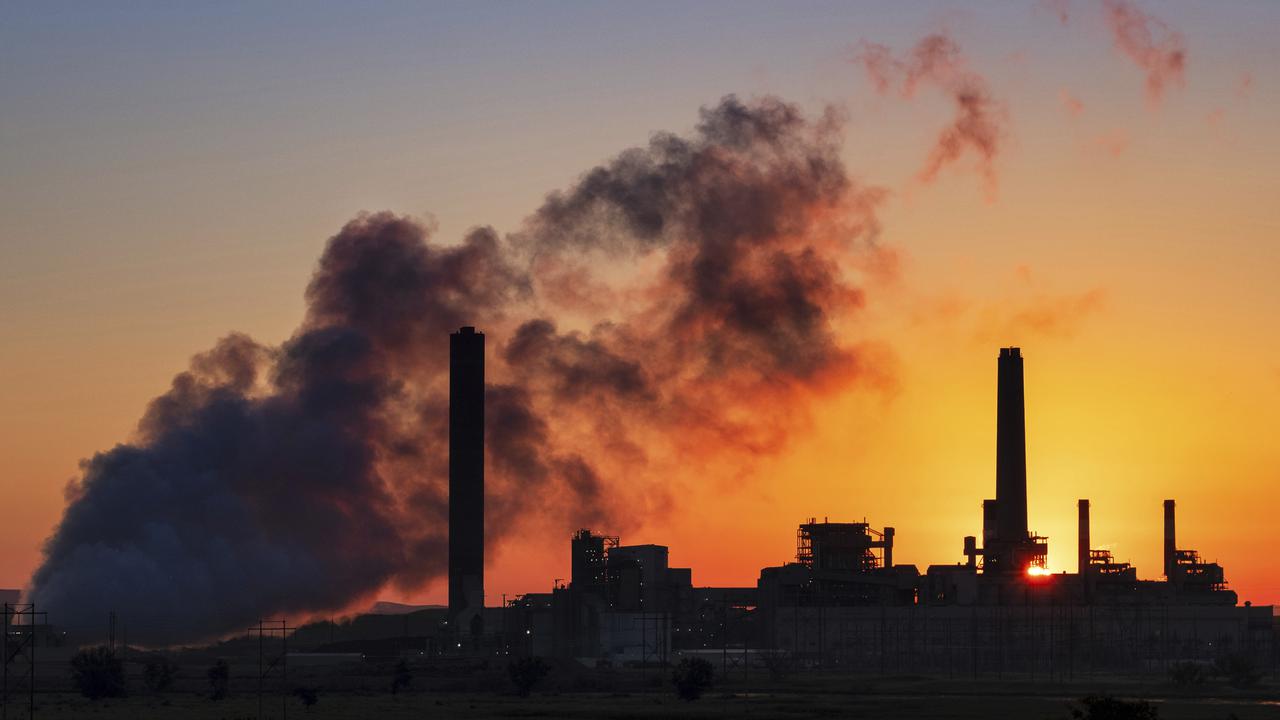WHAT WAS CLAIMED
Greenhouse gases don’t heat up the earth.
OUR VERDICT
False. Gases such as carbon dioxide warm the atmosphere by absorbing solar radiation reflected by the earth.
A coalition senator has argued the science behind climate change is "junk", even as the Senate was poised to enshrine into law a 43 per cent emissions reduction target.
In a Facebook post, Senator Gerard Rennick claimed that greenhouse gases don't trap in heat because they cannot stop convection - heat transferred by molecules moving from a hotter area to a cooler area.
However, experts have rubbished the claim, saying Senator Rennick's argument misses the point of the greenhouse effect.
They told AAP FactCheck that the post misrepresents the role of greenhouse gases, which absorb heat radiated back off the earth rather than acting as a physical barrier to convection.
"Climate change is junk science," Senator Rennick said in his September 4 post.
"Heat is kinetic energy, the energy of motion - it does not get trapped by CO2 because it's a gas. A greenhouse works by using a solid object to trap convection before the air cools and condenses. CO2 is not a solid object."

But atmospheric scientists say this is not how greenhouse gases work, although they admitted the greenhouse analogy is misleading.
When AAP FactCheck contacted Senator Rennick for clarification he repeated the original claim.
Ian Jamie, an atmospheric chemist at Macquarie University, said Senator Rennick is correct that greenhouse gases don't physically stop heat from escaping but this is a misinterpretation of the greenhouse effect.
"This is taking the 'greenhouse' analogy way too far," Dr Jamie said in an email. "Think of greenhouse gases as a blanket."
"Consider our body. It is radiating heat all the time, at the same rate.
"We know that putting a thin, 'holey' blanket over us will warm us up a little bit. Adding more greenhouse gases to the atmosphere is like filling in the holes in that blanket."
As our body continues to radiate heat it warms up the blanket, which in turn increases the body's temperature. The thicker the blanket, the more radiated heat it can store and the more it will warm the body, he explained.
While Dr Jamie said it would be more accurate to call it the "doona effect", he conceded it might be too much of a challenge to rename it now.
Rather than trapping in heat by convection, greenhouse gases intercept and absorb the sun's thermal radiation.
Particles of gases such as carbon dioxide are heated by radiation reflected from the earth's surface, Dr Jamie said.
The heat is then distributed to the rest of the atmosphere and down to the earth's surface through convection or reradiation.
This process is vital for life on earth.
Without greenhouse gases, the earth would reflect a much greater proportion of the sun's energy back into space, resulting in an uninhabitable average global temperature of -18C.
However, as humans emit more greenhouse gases, more solar radiation is trapped in the atmosphere, increasing the earth's energy balance.

Carbon dioxide is especially effective at trapping heat as it absorbs infrared radiation at wavelengths that evade water vapour - the earth's most abundant greenhouse gas.
At certain wavelengths, water vapour does not absorb thermal radiation, most importantly at around 10 microns in length. This atmospheric window is partially closed by CO2, which is effective at absorbing wavelengths around 15 microns.
This is why, despite making up only 0.04 per cent of the earth's atmosphere, minute changes in CO2 have a significant effect on the climate.
University of Melbourne atmospheric physicist Peter Rayner told AAP FactCheck: "It's not hard to show that greenhouse gases trap heat since we can see their absorption features in the thermal radiation leaving the planet," he said in an email.
Professor Rayner said we know how much heat is absorbed by greenhouse gases by measuring the difference in wavelengths of infrared radiation coming in from the sun and going out from the earth.
The earth will continue to warm as long as more greenhouse gases are emitted into the atmosphere, reducing the amount of radiation released back into space and increasing the earth's energy balance, he explained in an email.
"Convection plays no role in this discussion, it's a brutally simple energy accounting exercise."
AAP FactCheck has debunked numerous claims on greenhouses gases see here, here, here and here.
The Verdict
The claim greenhouse gases do not heat the atmosphere is false. Experts told AAP FactCheck gases such as CO2 absorb heat reradiated off the earth's surface that would otherwise escape into space. They said greenhouse gases don't actually work like a greenhouse as they don't trap in convection and instead are more similar to a blanket.
False – The claim is inaccurate.
AAP FactCheck is an accredited member of the International Fact-Checking Network. To keep up with our latest fact checks, follow us on Facebook, Twitter and Instagram.












